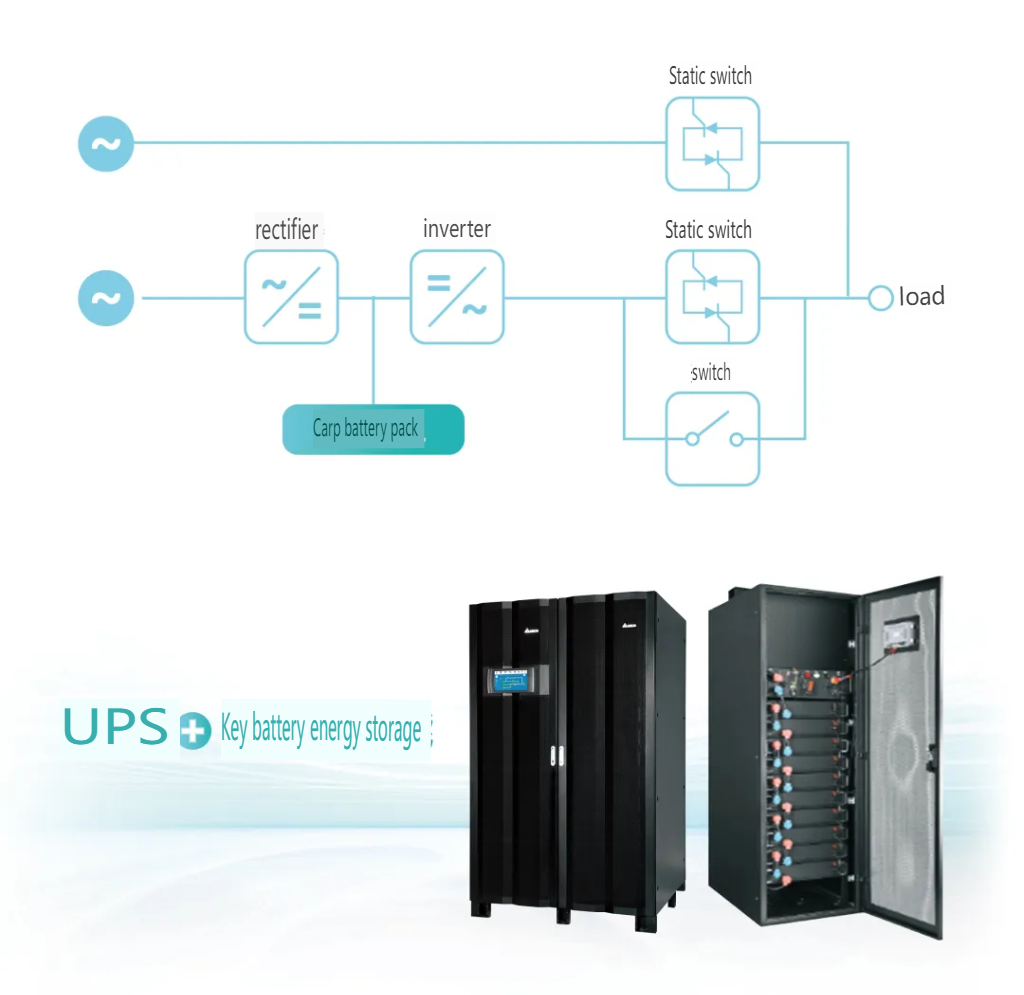In today's rapidly evolving tech landscape, data center owners and operators face the dual challenge of achieving high computing power while maintaining carbon neutrality. This balancing act has led researchers in data center infrastructure to focus on the dynamic partnership of UPS (Uninterruptible Power Supply) systems and lithium batteries. By leveraging the long cycle life of lithium batteries, data centers can effectively implement peak shaving and valley filling strategies. This approach not only allows for savings on operational costs through optimized electricity pricing but also helps balance power loads through energy storage.
The Value of UPS and Lithium Battery Storage
In cities where there is a significant price difference between peak and off-peak electricity, the combination of UPS and lithium battery storage can lead to considerable operational savings for data centers. When this system is further enhanced with renewable energy sources like wind and solar, the benefits for green energy savings become even more pronounced. Beyond the economic advantages, this solution offers several additional benefits:
- **Reduced Peak Load on the Grid**: This contributes to the safe operation of the electrical network.
- **Maximized Utilization of Existing Equipment**: By improving equipment efficiency, systems can operate at higher load factors.
- **Timely Battery Performance Monitoring**: This helps avoid anomalies during discharge.
According to detailed calculations, implementing a UPS and lithium battery storage solution can recover investment costs in just 3 to 6 years. Given the national policies encouraging balanced electricity consumption and gradually widening the price gap between peak and off-peak hours, significant long-term electricity savings can be realized, adding to its economic value.
Product Selection Criteria for UPS and Lithium Battery Storage
To effectively implement energy storage models, UPS systems must adhere to the following design requirements:
1. The energy storage function should not interfere with the normal discharge of the battery.
2. The system should support the configuration of charging start and stop times, charging current, and discharging start and stop times.
3. It must allow for setting a discharge current limit, with any insufficient current supplied by the rectifier or bypass.
For lithium battery systems, the requirements include:
1. Use of energy storage-type lithium batteries.
2. Discharge must stop upon reaching either the discharge stop time or the battery low voltage protection point.
3. Backup time should not be less than 1 hour.
Case Study: GREEN POWER's Data Center Project in Jiangsu
An exemplary case is GREEN POWER's data center project in Jiangsu, which has a load capacity of 300 kW and utilizes lithium iron phosphate batteries in its power supply system. The customer required a backup of 15 minutes while also implementing peak shaving and valley filling functionalities.
Local Peak and Valley Electricity Pricing
- **Peak**: 1.2081 RMB/kWh (8:00-11:00, 17:00-22:00)
- **Regular**: 0.7226 RMB/kWh (11:00-17:00, 22:00-24:00)
- **Valley**: 0.3265 RMB/kWh (0:00-8:00)
Configuration Considerations
Key factors for configuration include:
- **Peak-Valley Price Difference**: 1.2081 - 0.3265 = 0.8861 RMB/kWh
- **Peak-Regular Price Difference**: 1.2081 - 0.7226 = 0.4855 RMB/kWh
- **Regular-Valley Price Difference**: 0.7226 - 0.3265 = 0.3961 RMB/kWh
- **Peak and Valley Duration**: 8 hours each (maximum discharge time of 8 hours; batteries must be fully charged within this period).
- **Number of Battery Packs**: Limited to no more than 6 packs for safety (total capacity not exceeding 1200 AH).
- **Charging Current**: Must be sufficient to fully charge.
- **Discharge Depth**: For emergency power and battery health (150 kW requires approximately 200 AH for a 15-minute backup).
As a result, the lithium battery storage capacity should not exceed 960 AH, and the total capacity must be no less than the storage capacity plus 200 AH.
GREEN POWER's Solution
GREEN POWER's solution involves four ESSO 215K Commercial Energy Storage Systemseries UPS systems configured in a 4N power supply system. The ESSO 215K Commercial Energy Storage System can provide a maximum charging current of 120 A, capable of charging 960 AH in 8 hours. This system is paired with five 512V 200Ah energy storage lithium iron phosphate batteries for peak shaving and valley filling, resulting in a total configuration of six packs. Based on a discharge depth of 78% and a cycle life of 5000 times, the projected benefits are:
- Daily revenue from one UPS in storage mode is approximately 400 RMB, leading to a monthly revenue of around 12,000 RMB.
- Excluding lead-acid battery replacements, with an average lithium battery lifespan of 13.7 years, net revenue after removing investment costs could reach about 1 million RMB.
- If replacing lead-acid batteries, reducing two replacements within 13.7 years could increase total revenue to approximately 1.26 million RMB.
Conclusion: The Future of Energy Storage in Data Centers
Due to their long lifespan, high energy density, and eco-friendly benefits, lithium batteries have become the mainstream choice for UPS energy storage. The UPS and lithium battery storage solution from GREEN POWER, with its evident advantages, is poised to become a new trend in energy-saving strategies for data centers. By embracing these innovative technologies, data centers can effectively achieve both high computing power and carbon neutrality, paving the way for a more sustainable future.
If you're interested in learning more about our solar energy storage offerings, we encourage you to explore our product line. We offer a range of panels and battery that are designed for various applications and budgets, so you're sure to find the right solution for your needs.
Website:www.fgreenpv.com
Email:Info@fgreenpv.com
WhatsApp:+86 17311228539
Post time: Oct-26-2024













